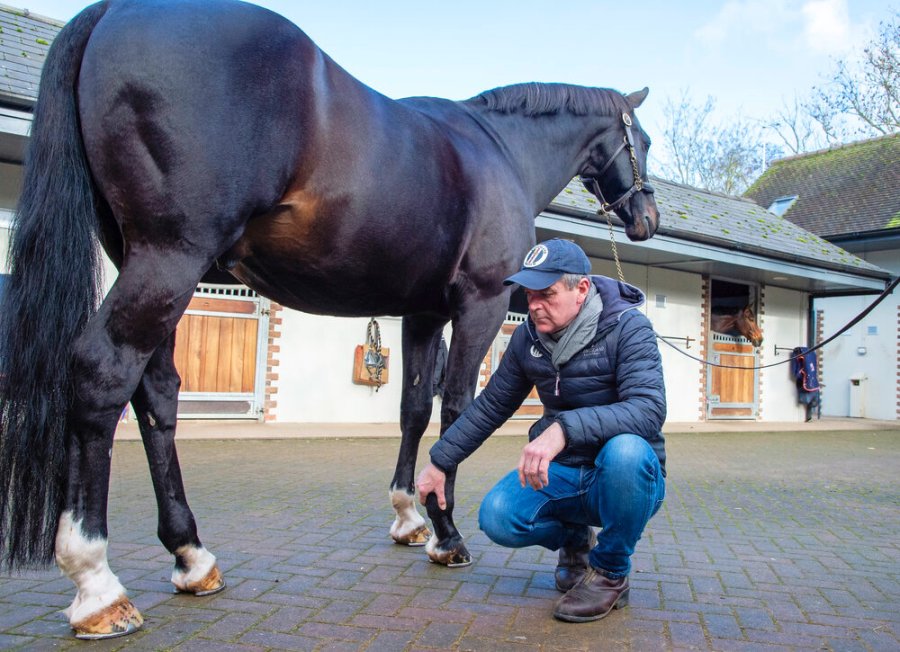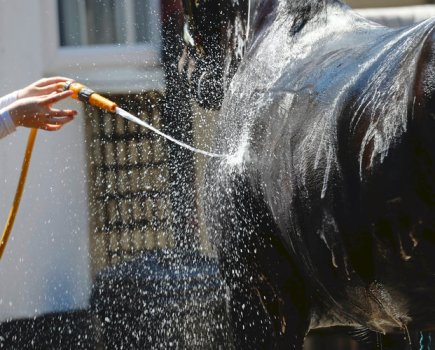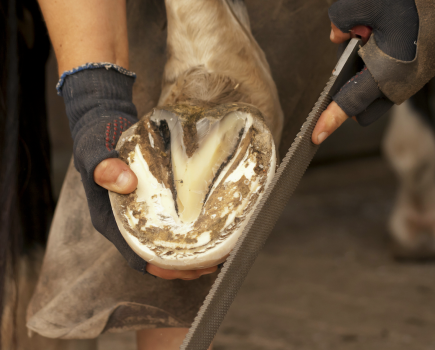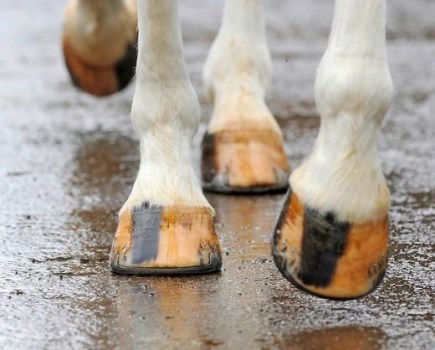Knowing how to check your horse’s vital signs is important, because doing so regularly helps you get to know what is normal for your horse and means you are more likely to identify a health problem early.
Vital signs can very slightly and what may be normal for one horse isn’t for another. Below is a step-by-step guide for checking each one as well as veterinary videos that show how to do it. Write down your horse’s vital signs every time you take them, so that you have a record to refer back to when needed.
How to check a horse’s temperature
A healthy horse’s temperature is between 37.5 and 38.5 °C (99-101°F).
- Switch on the digital thermometer, or vigorously shake the mercury thermometer until the mercury is below the start of the temperature scale.
- Lubricate the bulb with petroleum jelly.
- Run your hands over your horse’s hindquarters and lift his tail.
- Stand to one side to avoid being kicked. Gently slide the thermometer into the anus until two thirds is inside the rectum.
- Tilt the thermometer so the end of it lies against the rectal wall. This will ensure it is measuring your horse’s temperature, not that of droppings.
- Wait a full minute (or until the digital thermometer beeps) then withdraw the thermometer and wipe it clean.
- Read the temperature.
- Clean with disinfectant and store safely.
Watch how to take a horse’s temperature
The following video from the British Equine Veterinary Association (BEVA) shows how to take a horse’s temperature:
How to check a horse’s heart rate (pulse)
A healthy horse’s heart beats between 36 and 40 times per minute when resting.
- The easiest place to take your horse’s pulse is where the facial artery passes under the lower jaw. The horse must be standing up and not eating.
- Run your fingers along the lower border of the mandible. The artery can be felt as a tubular structure.
- Apply light pressure with the flat of your first three fingers and feel the pulse.
- Count the number of beats in 15 seconds.
- Multiply this figure by four to obtain your horse’s pulse rate.
How to check a horse’s breathing rate
A healthy horse’s respiration rate is between eight and 15 breaths per minute at rest.
- This should be done when the horse is resting and relaxed.
- Stand quietly and watch and count the movement of the flanks for one minute.
- The flanks and chest wall move up and outwards as the horse breathes in. They move down and in as the horse exhales.
- Each time the horse breathes in and out is counted as one respiratory cycle.
How to check a horse’s digital pulse
- When your horse is standing quietly, feel for the pulse where the digital artery runs over the sesamoid bones, just above the fetlock joint (see main image, top).
- This can be more difficult to locate unless the horse has a foot problem, such as an abscess of laminitis.
- A strong or bounding pulse in both front feet is common in horses with laminitis.
Mucous membranes
The colour of your horse’s gums are also a useful indicator of their health.
In a healthy horse, they are moist and pink in colour.
Main image: Alan Davies’ is pictured checking the digital pulse of Carl Hester’s horse, Uthopia. © Your Horse Library/Kelsey Media Ltd/Sally Newcomb









